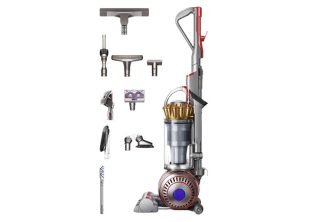Snacks are essential for keeping your equine friends healthy and happy. They are important for positive reinforcement during training and building good relationships with your horses. However, when serving a horse snacks, make sure you follow a strict regimen and do not deviate too often out of love. Otherwise, you may accidentally reward behaviours you’d rather your horse stopped doing, or even put yourself in an uncomfortable position where you will not be able to persuade your horse to do anything without a treat!
Table of Contents
Should You Give Your Horse Treats?
Put simply: yes! You should give your horse treats. However, like all other relationships, your relationship with your horse also needs to be adequately balanced with the correct measures of affection and boundaries. Raising a pet is like raising a child in a lot of ways. You can treat them with the odd snack a few times, but you don’t want to spoil them. This ensures that when you do reward them with a treat, it’s a special thing and is therefore more effective.
What Snacks Do Horses Like?
When it comes to choosing horse snacks make sure you choose right. How? Remember that whatever you feed your horse, make sure it is healthy and has tons of nutritional value because, ultimately, what any living thing eats affects their health and development.
Give Your Horse an All-Natural Treat
The best treats are ideally the completely natural ones. Horses particularly like sweet treats, so your best bet is sweet fruits and vegetables. Apples are a particular equine favourite. Horses also enjoy carrots. But you can try feeding your horse other fruits and vegetables, like grapes, berries, raisins, watermelons, celery and pumpkin. Whatever you offer your horse, just make sure you cut it up into bite-sized pieces. Something too small can be a choking hazard, but so can large pieces of food!
In addition, avoid foods that can be choking hazards in their own rights, like fruits with pits in them. So, maybe think twice about rewarding your horse with a peach straight from the tree. You can, however, offer them some by slicing the food into smaller pieces. Similarly, while you can offer horses pumpkin and watermelons which can be simply broken open in the pasture where your horse grazes, it can be helpful to mash these up a little first. This makes it a bit easier for your horse to eat, especially if they are older and have teeth issues.
Try Making Your Own Homemade Horse Treats
Along with natural treats, your horse may enjoy a treat you’ve made. Not only will they taste all those wonderful ingredients but also the love and effort you put into making it!
One of the most important pros of homemade treats is that they are easily accessible and often budget friendly. On the Internet, you can find lots of easy recipes for delicious and extremely nutritious horse snacks and treats. A popular homemade horse treat is sweet apple slices soaked in molasses and then covered with rolled oats. Many people also like to feed their horses baked carrot crisps. Just prepare them by mixing apples and carrots with bran, molasses, flour and water, and then bake for half an hour. Another similar treat is pumpkin oatmeal cookies for horses. Frozen banana mash, which is basically mashed and frozen bananas mixed with shredded carrots and refrozen, is indeed an equine favourite. This is a particularly convenient treat as it can be offered frozen and thawed, so can be great in summer or after a particularly sweaty ride. It is especially useful for administering medicines too when presented thawed. However, before offering any of these sugary treats to your horse, make sure they do not have any sugar intolerances.
However, if you are short on time then a homemade snack may not be the right option. But, as the saying goes, “where there’s a will, there’s a way.” You may not be able to make your horse treats, but someone else can! There are a number of e-commerce websites that sell homemade horse treats online. In addition, there may even be a vendor near you selling homemade horse snacks. Check with your local riding community. If you do go down this route, try and get just a small quantity of the treats first. This way, you can find out if your horse enjoys the treat without investing a lot of money. You can always order more!
Shop Commercially Available Treats
Along with natural treats and those you make yourself, you can also buy horse snacks in stores and online. When choosing a commercially available treat, make sure you take into consideration its nutritional value. A good treat would be easy to chew and great for training purposes. Secondly, it should be free of any preservatives, artificial flavours and colours. In addition, try and see if the treats you’re opting for are rich in potassium which is essential for healthy muscle and nerve development. Furthermore, try to find ones that are rich in natural sugars because they are a fast energy source.
There are a few brands that offer treats made by hand that are available online, a popular brand is Anipal Sea Horses Learn and Restore treats. These are hand baked and made using some of the most nutritious natural superfoods, such as organic seaweed and tumeric. In addition, these treats are further enriched with omega 3 and 6, and prebiotics that improve and maintain gut health.
Another popular treat that you can use during training sessions is the Equine Pure Delights range. Available in lots of tasty flavours, these are a delicious treat option with high nutritional value which is especially great for maintaining coat health. They can also improve your horse’s gut health.
What to Look for in a Horse Snack
There are a few benefits you need to look for when buying treats for your horses, or any pet for that matter! These benefits can be divided into two categories: nutritional and developmental.
As far as nutritional benefits are concerned, make sure you take into consideration how the treats are meant to be used. Ideally, treats should always be used supplementarily to your horse’s regular diet. They cannot be a replacement for meals. However, using them in addition to their standard meals can have immense health benefits for the brain, coat and joints of your equine companions.
As far as developmental benefits are concerned, you want to be able to use them as a form of positive reinforcement during training sessions. Therefore, they may need to be small to ensure you can give lots of your rewards as your horse learns, without giving them a stomach ache or spoiling their diet! Similarly, you may want treats that are easy to carry in your pocket, so you can reward your horse on the go.
Tips for Giving Your Horse Treats
Now you have an idea of the kinds of treats you want to give your horse, it’s time to learn about ensuring you are giving your horse treats effectively.
How to Present a Horse Snacks
Because a horse’s vision is different to ours and their mouth much larger, it can be hard for them to take a treat from your hand if it is not presented correctly. Learning how to give your horse treats correctly will make for a much more enjoyable experience all around and will help you keep your fingers intact! The rule of thumb is to place the treat flat on your palm. Keeping your palm flat and open, offer the treat to your horse.
While it can be a fun trick, avoid teaching your horse to take treats from your pockets. This can teach them to nip at anyone’s pockets, even if there are no treats.
Take Your Horse’s Health Into Consideration
Before giving your horse any treats, particularly new treats, make sure you aren’t offering them something that may negatively affect their health. You may need to check for signs of underlying health conditions that could be worsened by particular snacks. For instance, some horses are more susceptible to laminitis and this condition can be worsened by sugary treats, like sugar cubes and molasses.
Think About the Season
Seasonal changes should also be taken into consideration when presenting your horse treats. On a cold winter’s day, avoid giving your horse snacks that are chilled or frozen. During cold weather, you can instead offer your horse a warmed bran mash, which is a particular favourite for many horses. In addition, beet pulp soaked in warm water is also quite a fancied horse treat.
On warm summer days, horses like to cool down with a treat just like us. Some great treat ideas are to cut up fruit slices and put them in an ice cube tray and fill up the rest with applesauce and you’ve got a delicious summer treat for your horse. You can even enjoy your own icy apple treat with them!
Don’t Over-Treat Your Horse
Ideally, you don’t want to give your horse lots of treats. Often two or three is plenty. In addition, your horse may prefer a larger treat that they can nibble. Knowing how your horse likes to eat treats can be helpful for training them.
In fact, according to experts it is best to incorporate small samples of treats into a training program as positive reinforcement is known to elicit better results. For instance, this is a part of clicker training. This is a training method that involves the use of food in conjunction with a device that makes a clicking sound. When your horse does the right thing during a training session, you use the clicker followed by offering a horse snack. Your horse will associate the sound with the offering of a treat. Clicker training initially requires a fair bit of work because you need to condition your horse to associate the sound with a reward. Initially, you may have to reward your horse with more frequent treats but you will need to make it harder as time goes by and you make more progress. Just make sure you have considered how this higher amount of treats affects your horse’s nutritional needs. You may need to choose extremely healthy treats for this kind of training.
Shop for Horse Snacks Online Today
For many horse owners, shopping for horse treats online is the best option as it is convenient and offers a greater range. You can support local vendors, as well as shop at larger stores. However before you make any purchases, make sure you read the description and nutrition information carefully. This is important because you need to be sure the treat caters to your horse’s dietary and nutritional needs.
In addition, the product description will also tell you how you can use the particular treats. For instance, some are often used as a sole treat while others are often mixed in small quantities in a horse’s meal. Secondly, also take into consideration star ratings of the product as these will give you a fair idea of what other people’s horses have thought of the product, because it’s always better to hear it from the horse’s mouth. Equipped with this knowledge, you will be able to make the best judgement on what is right for your pet.





